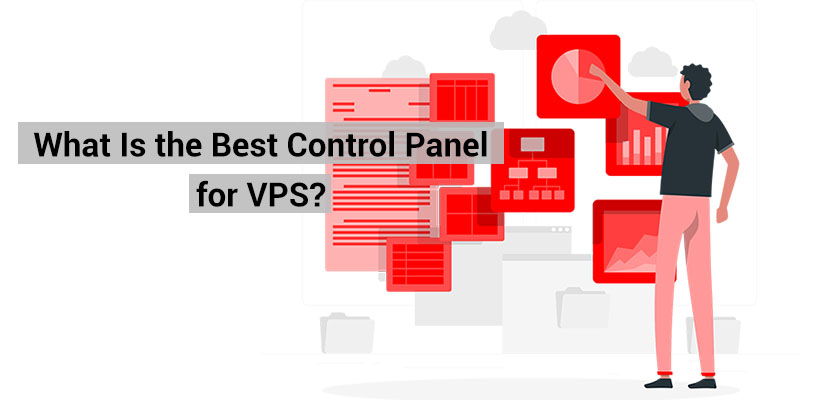Introduction
Selecting the right control panel for your Virtual Private Server (VPS) is a critical decision that directly influences your server management experience. A robust control panel streamlines various tasks, from server configuration to application deployment. In this guide, we’ll explore key factors to consider when choosing the best control panel for your VPS, ensuring a seamless and user-friendly hosting experience.
1. User-Friendliness and Interface
Intuitive Navigation
Opt for a control panel with an intuitive and user-friendly interface. This is especially important if you’re new to managing a VPS. A well-designed control panel simplifies complex tasks, allowing you to efficiently navigate and manage your server without extensive technical expertise.
2. Compatibility and Supported Technologies
Application and Software Support
Consider the compatibility of the control panel with the applications and software you plan to run on your VPS. Ensure that the control panel supports your preferred programming languages, databases, and content management systems. Compatibility enhances the seamless integration of your desired technologies.
3. Security Features
Enhanced Security Measures
Security is paramount in VPS management. Choose a control panel that offers robust security features, including firewall management, user access controls, and secure socket layer (SSL) support. A secure control panel helps safeguard your server and the data hosted on it.
4. Resource Management
Efficient Resource Allocation
An effective control panel allows for efficient resource management. Look for features that enable you to monitor and allocate resources such as CPU, RAM, and disk space easily. This ensures optimal performance and responsiveness for your hosted applications.
5. Automation and Scripting Support
Task Automation
Consider a control panel that supports automation and scripting. This facilitates the automation of repetitive tasks, saving time and reducing the likelihood of manual errors. Automation support is particularly beneficial for scaling resources and deploying applications.
6. Scalability Options
Flexible Scalability
Choose a control panel that accommodates the scalability needs of your VPS. Whether you anticipate growth in website traffic or additional applications, a scalable control panel allows you to seamlessly upgrade resources and adjust configurations as your requirements evolve.
7. Customer Support and Documentation
Reliable Support Resources
Evaluate the customer support and documentation provided by the control panel provider. Access to comprehensive documentation and responsive customer support is invaluable, especially during critical situations or when you encounter challenges in managing your VPS.
8. Cost Considerations
Balancing Features and Budget
Consider the cost of the control panel in relation to its features and capabilities. While some control panels come with a price tag, others may be open-source or bundled with your VPS hosting plan. Balance your budgetary constraints with the features that are essential for your VPS management needs.
9. Community and User Feedback
Community Engagement
Check for community engagement and user feedback on forums, social media, and review platforms. Insights from other users can provide valuable perspectives on the performance, reliability, and user satisfaction with a particular control panel.
10. Trial Periods and Demos
Hands-On Experience
Whenever possible, opt for control panels that offer trial periods or demos. This hands-on experience allows you to assess the user interface, functionality, and overall compatibility with your requirements before committing to a specific control panel.
Conclusion
Choosing the best control panel for your VPS is a crucial step in optimizing your server management experience. Prioritize user-friendliness, compatibility, security features, resource management, and scalability options. Additionally, consider the cost, support resources, community feedback, and explore trial periods to ensure that the chosen control panel aligns seamlessly with your VPS hosting goals.
Frequently Asked Questions (FAQs)
Can I change the control panel after setting up my VPS?
Changing the control panel after the initial setup can be complex and may result in data loss. It’s advisable to choose the right control panel from the beginning based on your requirements.
Are there free and open-source control panels available?
Yes, several open-source control panels are available, offering basic to advanced features. Examples include Webmin, Virtualmin, and VestaCP. However, some advanced features may be exclusive to paid control panels.
What security measures should I look for in a control panel?
Look for features like firewall management, SSL support, role-based access controls, and regular security updates. A control panel with robust security measures enhances the overall protection of your VPS.
How do I know if a control panel is compatible with my applications?
Check the documentation and specifications of the control panel to ensure compatibility with your preferred programming languages, databases, and applications. Additionally, you can seek advice from the control panel provider or community forums.
Can I use a control panel for managing multiple VPS instances?
Yes, many control panels support the management of multiple VPS instances from a centralized interface. This is particularly useful for users who operate multiple servers or a VPS cluster.

